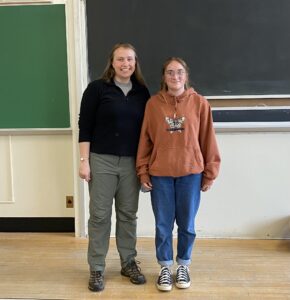In this study, we monitored five different treatments to control purple loosestrife: the impact of the beetle species Galerucella calmariensis; cutting the stems; cutting off flowers; digging whole plants; and control plot. We expected to see an impact on the growth and reproductive success of purple loosestrife over a period of four years. We collected data on plant characteristics influenced by beetles. Our results show that the beetles’ introduction significantly reduced the success of purple loosestrife compared to control or to limited cutting of plants. Plant height was also significantly diminished under certain treatments (P<0.005), indicating that beetles feeding on stem tissue damaged the plants. Our results demonstrate that, compared to other methods surveyed, the introduction of beetles is the most effective means of controlling the spread of purple loosestrife.
Past Projects
What’s For Dinner? Beetle Herbivory as a Biological Control for Purple Loosestrife (2023)
-
Second Place – Ram L. Chugh North Country Research & Public Service Awards
- Student(s): Mckensey Biggie
- Project Mentor(s): Jess Rogers
- Poster




